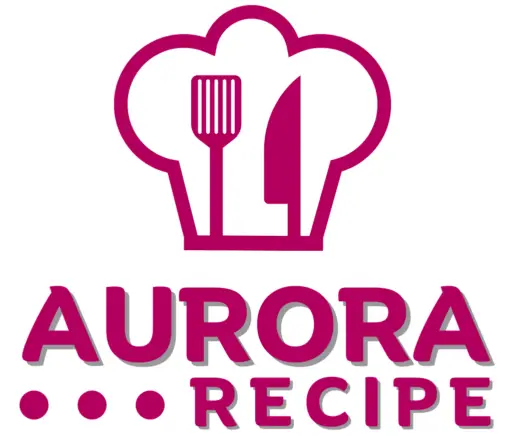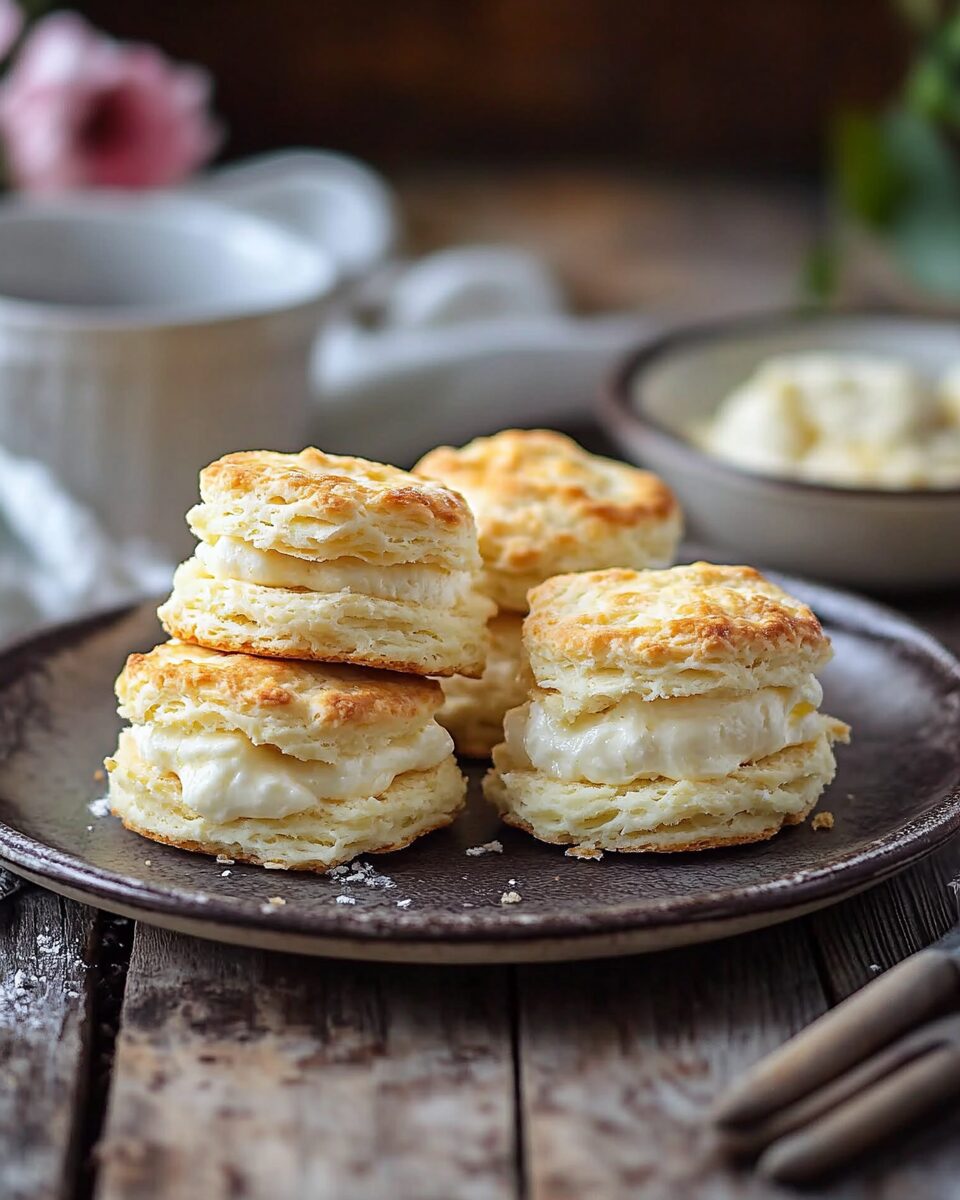There’s something inherently comforting about a freshly baked scone, especially when it’s a traditional Irish one. These scones boast a golden, flaky exterior that gives way to a tender, buttery interior. The subtle sweetness and the slight tang from the buttermilk make them an ideal companion to a robust cup of tea or coffee.
Whether enjoyed plain, with a pat of rich Irish butter, or generously spread with jam and clotted cream, these scones are a testament to the timeless appeal of simple, well-executed baking. Perfect for breakfast, afternoon tea, or any moment that calls for a touch of homemade indulgence, they bring a taste of Ireland’s cherished culinary traditions to your table.
Full Recipe
Ingredients:
- 2 cups all-purpose flour
- 1/4 cup granulated sugar
- 2 teaspoons baking powder
- 1/2 teaspoon baking soda
- 1/2 teaspoon salt
- 1/4 cup cold unsalted butter, cubed
- 1/2 cup buttermilk
- 1 large egg
- 1 teaspoon vanilla extract
- 1/2 cup raisins or currants (optional)
- 1 egg yolk mixed with 1 tablespoon milk (for egg wash)
Directions:
- Preheat the oven to 400°F (200°C). Line a baking sheet with parchment paper.
- Combine dry ingredients: In a large bowl, whisk together the flour, sugar, baking powder, baking soda, and salt.
- Incorporate butter: Using a pastry cutter or your fingers, rub the cold butter into the dry ingredients until the mixture resembles coarse crumbs.
- Prepare wet mixture: In a separate bowl, whisk together the buttermilk, egg, and vanilla extract.
- Form the dough: Gradually pour the wet mixture into the dry ingredients, stirring gently until just combined. If using raisins or currants, fold them in at this stage. Do not overmix.
- Shape the scones: Turn the dough onto a lightly floured surface and gently knead a few times. Roll out to about 1-inch thickness and cut out scones using a round cutter.
- Apply egg wash: Place scones on the prepared baking sheet and brush the tops with the egg yolk and milk mixture for a golden finish.
- Bake: Bake for 12-15 minutes or until the scones are golden brown on top.
- Serve: Allow to cool slightly before serving warm with butter, jam, or clotted cream.
Prep Time: 15 minutes | Cooking Time: 15 minutes | Total Time: 30 minutes
Kcal: 210 kcal | Servings: 8 scones
The History of Irish Scones
Irish scones are a beloved part of Irish culinary tradition, and their origins trace back to the early days of the country’s agricultural and baking culture. While scones are enjoyed across the United Kingdom, Irish scones stand out for their simple yet flavorful combination of ingredients that deliver a soft, moist texture and a slightly crumbly exterior.
The Irish were among the first to incorporate buttermilk into their baking, which played a crucial role in shaping the flavor and texture of Irish scones. Historically, the Irish used what was available locally in their baking, and ingredients like buttermilk, butter, and flour were all staples in Irish homes. The traditional Irish scone recipe has remained largely unchanged for generations, making it a comforting treat that brings a taste of Ireland to any table.
Why Irish Scones Are Special
What sets Irish scones apart from other variations is their unique texture, which strikes a perfect balance between tenderness and crumbly crunch. The addition of buttermilk helps tenderize the dough while also giving the scones a slight tang. This combination results in a more delicate scone, which is a favorite in Irish households.
Irish scones are also incredibly versatile. Traditionally, they are enjoyed with a simple spread of butter or jam, but they can also be served with clotted cream, whipped cream, or even cheese. This adaptability makes them a perfect choice for a wide range of occasions, from breakfast to afternoon tea or even as a snack.
The Perfect Time to Serve Irish Scones
Irish scones are incredibly versatile, making them suitable for various occasions. Traditionally, they are enjoyed for breakfast or as part of a light afternoon tea. There is something truly special about having a warm scone with a hot beverage. Whether it’s a cup of tea or coffee, the combination of a freshly baked scone and a comforting drink is a timeless pairing.
Irish scones are also a great option for brunch gatherings or as a snack. They’re easy to prepare in advance, making them perfect for a busy morning or afternoon. If you’re hosting a tea party, these scones will impress your guests and elevate the experience, creating a welcoming and relaxed atmosphere.
They are also an excellent addition to any celebration, whether it’s a birthday, holiday, or even a simple family gathering. Their simple charm and delicious flavor ensure they’re a hit at any event, and because they’re so easy to make, they won’t take up too much of your time.
Making the Most of Your Irish Scones
While traditional Irish scones are made with minimal ingredients, you can personalize them to suit your preferences. If you’re not a fan of raisins or currants, you can leave them out entirely or swap them for other dried fruits like cranberries or apricots. If you prefer a sweeter version, you can increase the sugar or add a drizzle of honey or syrup.
For those who love a bit of extra flavor, adding spices like cinnamon or nutmeg can transform the scone into something entirely different. Whether you want to keep things traditional or add your twist, Irish scones are adaptable to a wide range of tastes.
How to Serve Irish Scones
There’s no one right way to serve an Irish scone – it all depends on your preferences and the occasion. If you’re serving them for breakfast, a simple spread of butter or jam is all you need. Irish butter, known for its rich and creamy flavor, is an excellent choice for slathering on scones.
For an afternoon tea, serve the scones with a variety of jams or marmalade. Strawberry jam, raspberry preserves, and orange marmalade all pair beautifully with the soft texture and subtle sweetness of the scones. You can also add a dollop of clotted cream for an extra indulgence.
For something a bit more savory, try serving Irish scones with a slice of cheese or a spoonful of chutney. Irish cheddar, with its sharp and tangy flavor, complements the buttery richness of the scones wonderfully.
If you’re serving them at a party or gathering, you can offer an assortment of spreads so guests can customize their scones to their liking. You could include sweet options like jam and honey as well as savory options like cream cheese or smoked salmon.
Common Mistakes to Avoid When Making Irish Scones
Making the perfect Irish scone requires attention to detail, but it’s easy to avoid common mistakes if you know what to watch out for. One of the most common mistakes is overworking the dough. Unlike many other baked goods, scones should not be kneaded for long. Overmixing the dough can result in dense, tough scones instead of light and fluffy ones.
Another common issue is using the wrong type of flour. It’s essential to use all-purpose flour for the best texture. While self-raising flour might seem like a good option, it can cause the scones to rise too much, resulting in a crumbly texture. Stick to all-purpose flour for a delicate, tender result.
Temperature is also key. Cold butter is a must in scone recipes. The cold butter creates small pockets in the dough, helping to achieve that desirable flaky texture. Be sure to cube the butter and keep it chilled until you’re ready to use it.
Finally, be mindful of the baking time. Scones should be golden brown on top but still soft in the center. Keep an eye on them towards the end of baking to ensure they don’t overbake and dry out.
Customizing Your Irish Scones
One of the best things about making scones at home is how easy it is to customize them. Here are some ways you can add your flair to traditional Irish scones:
-
Add Fruit: If you like fruit in your scones, try adding fresh or dried berries like blueberries or cranberries. These fruits pair beautifully with the buttery texture of the scones and add a natural sweetness.
-
Use Flavored Butters: For an extra burst of flavor, try using flavored butter. Cinnamon butter or honey butter can bring a new dimension to your scones.
-
Mix in Nuts: For a bit of crunch, try adding chopped nuts like walnuts or pecans. These work particularly well if you’re serving the scones with a creamy spread.
-
Herbed Scones: If you’re looking for a savory twist, try making herbed scones by adding rosemary, thyme, or chives to the dough. These are excellent for pairing with cheese or spreads at brunch.
The Importance of Buttermilk
Buttermilk is a key ingredient in traditional Irish scones, and it’s responsible for the slightly tangy flavor that makes these scones unique. Buttermilk also helps activate the baking soda in the recipe, ensuring the scones rise beautifully and achieve that soft, tender texture.
If you don’t have buttermilk on hand, don’t worry! You can easily make your own buttermilk by adding a tablespoon of lemon juice or vinegar to a cup of milk. Let it sit for five minutes before using it in your recipe. This simple trick will provide you with the same tangy taste and tender texture as store-bought buttermilk.
Conclusion
Traditional Irish scones are a beloved treat that offers a perfect balance of flavors and textures. Their simplicity is what makes them so special, and the ability to customize them means they can be enjoyed by everyone. Whether you’re serving them for breakfast, tea, or a special occasion, Irish scones will always impress with their delicious flavor and light, flaky texture.
By following a few simple steps and avoiding common mistakes, you can enjoy the perfect batch of Irish scones any time you like. And don’t be afraid to get creative by adding your favorite flavors and toppings. Whether you prefer your scones with jam, butter, or cheese, there’s no wrong way to enjoy these classic baked goods. With their rich history, comforting flavor, and versatile nature, Irish scones will undoubtedly become a staple in your baking repertoire.






